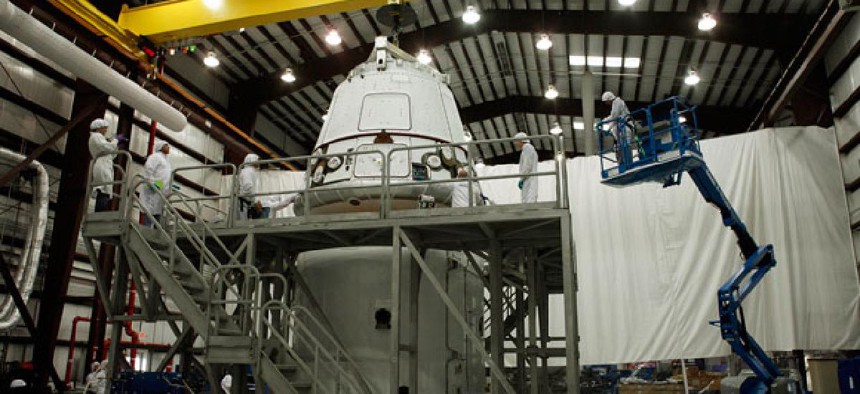
The SpaceX Dragon Capsule AP file photo
NASA turns to private sector for supply missions
First SpaceX launch with about 1,000 pounds of food, clothing, equipment and 23 science experiments goes off without a hitch.
Despite some clouds and a slight chance of rain, SpaceX's first ever official mission went off without a hitch in Cape Canaveral on Sunday evening. The launch ushers in a new era for NASA, now space shuttle-less, as it turns to the private sector to keep its astronauts fed and ready on everybody's favorite lab above the clouds, the International Space Station. The Falcon 9 rocket took off at 8:35 p.m. carrying a single unmanned cargo capsuled named Dragon with about 1,000 pounds of food, clothing, equipment and 23 science experiments. Also, space ice cream. It'll return to Earth in three weeks.
The official launch of the SpaceX program ushers in a new era for NASA. It's an independence day of sorts. Since it shuttered its shuttle program and cut back on rocket missions, NASA's had to depend on the Russian space agency to make deliveries to its astronauts on the International Space Station. (Russia flying space missions for the U.S.? Remember the Cold War?) But with the help of Elon Musk's ten-year-old company SpaceX, the U.S. enters a new era of space travel that leans on the private sector to do what the public sector can't.
Read the full story at The Atlantic Wire
NEXT STORY: Teleworking, Silicon Valley Style






